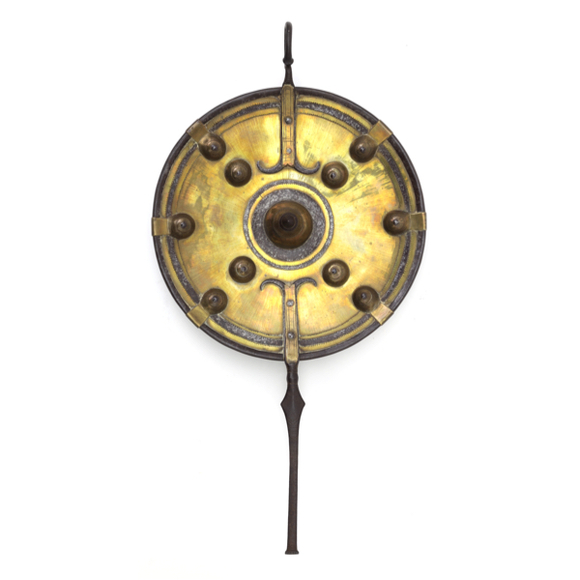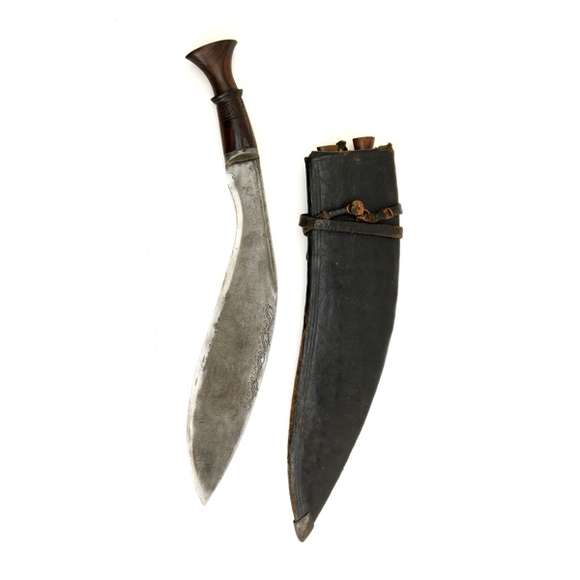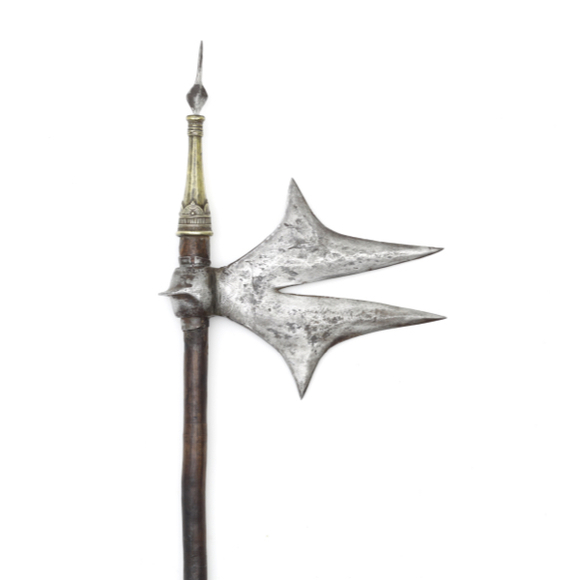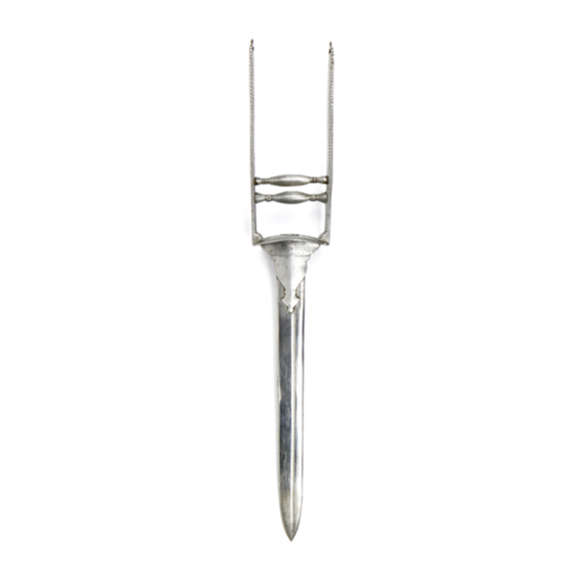Peculiar shield with catching hook, used by the Santali people of Bengal.
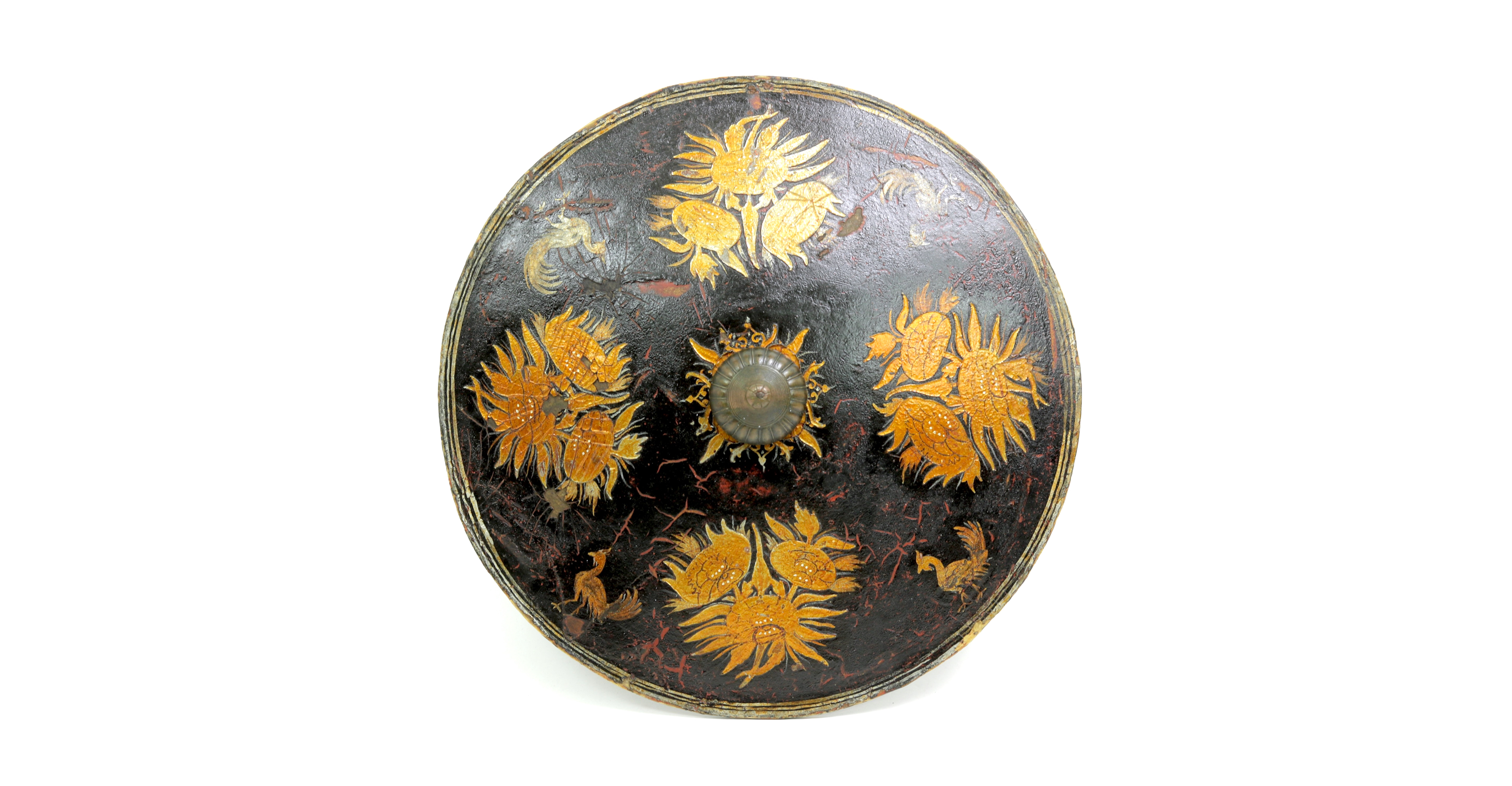
47 cm
Dome 5 cm
With boss 9.5 cm
1380 grams
Cured hide, lacquer, pigments, iron, brass
India
16th-17th century
From a Canadian private collection
Description
An unusual and probably rather early Indian shield. It is made of thick cured hide, and is only moderately domed. The decoration consists of thick black lacquer over a red base layer, the top layer split due to prolonged drying, exposing the reddish underlayer. The decor consists of four fighting roosters and four groups of three large flowers each, executed in gold lacquer. The flowers are so thickly applied that they are raised above the surface. There are three lines around the shield's circumference and star-shaped ornamentation in the center.

Single boss
Unusual for Indian shields, it only has a single brass boss in the center. Usually there are four and sometimes even six. At the back is a small protrusion with a hole, and a ring, possibly of a later date. The inside of the shield is lacquered black entirely. Some pieces of old English language newspapers are stuck to the inside surface.
A single boss shield is attributed to Guru Gobind Singh. It was captured by the British during their raid on Maharajah Runjeet Singh's palace in 1849, but returned to India in 1966.
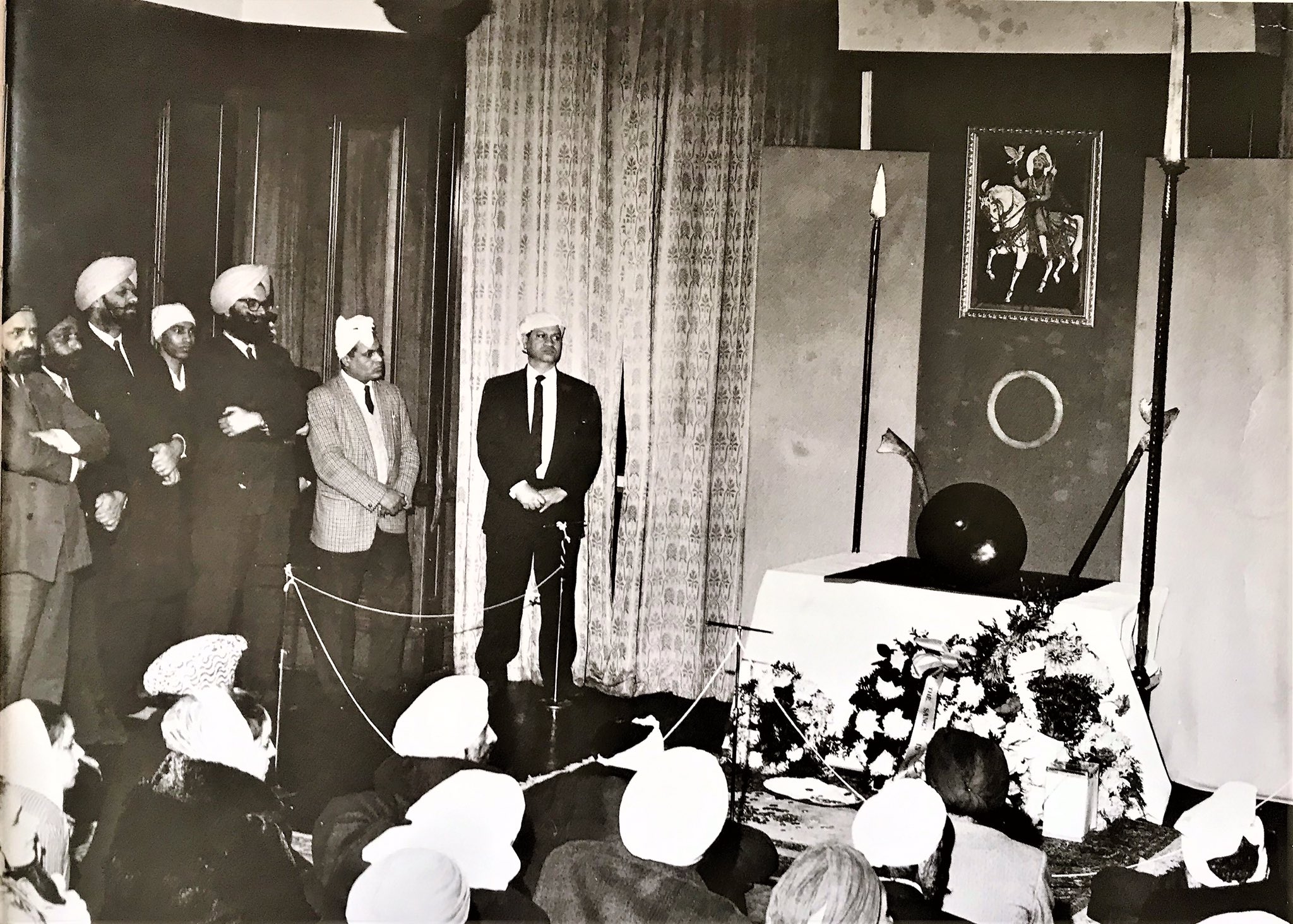
Single boss shield of Guru Gobang Singh.
As can be seen in detail in this Youtube video, this shield is unsual in many aspects and differs markedly from the subject of this article.
Attribution
If not Sikh, what is it? The jury is out on this shield. Me and other experts who have seen it all agree it's probably quite early.
The single boss, black and gold color scheme, and the three lines around the shield's circumference are seen on a shield depicted in the Nujum-ul-Ulum "Stars of the Sciences" written in Bijapur South India, around 1570 A.D.1
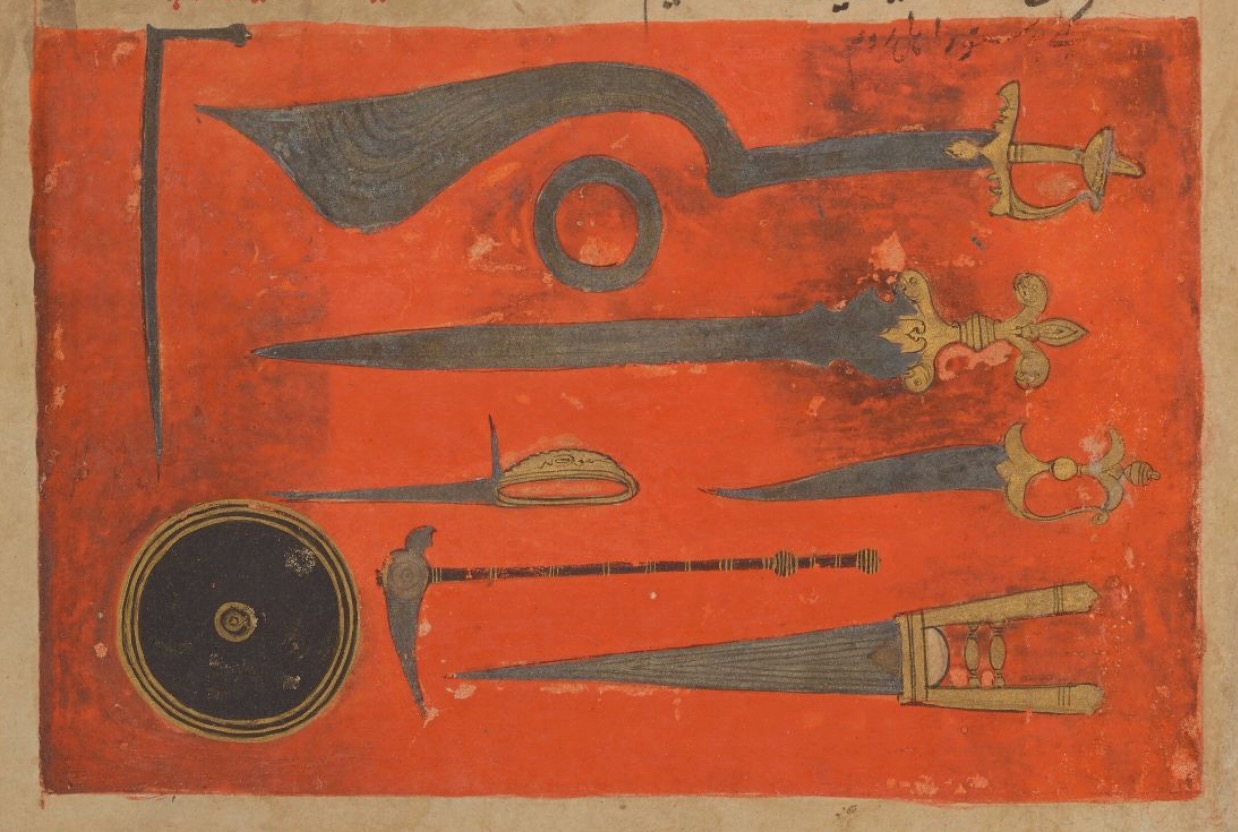
Shield in the Nujum-ul-Ulum of circa 1570.
The design with four flowers in turn is somewhat more northen in nature and reminds of later Rajasthani work. Another painted Indian shield with very similar lacquer work to ours, and an attachment point for a single boss, now lost, appeared at Bonhams in 2019. It is even more typically Rajasthani in nature.2
The boss on ours, in turn, is more Southern Indian in style but to complicate matters, southern design influences picked up popularity in Rajasthan folllowing the conquests of Maharajah Anup Singh who brought back many art treasures from his conquests in Bijapur and Golconda in the late 17th century.
As far as I am aware, single boss shields with three lines around the circumference don't turn up anywhere in arts and literature, apart from that one 1570 A.D. mention of their use in Bijapur.
Notes
1. Nujum al-'ulum or "Stars of the Sciences", Bijapur, circa 1570. Chester Beatty Library, accession number: In 02
2. Bonhams; Islamic and Indian Art including Modern and Contemporary South Asian Art, London, 22 Oct 2019, LOT 178.
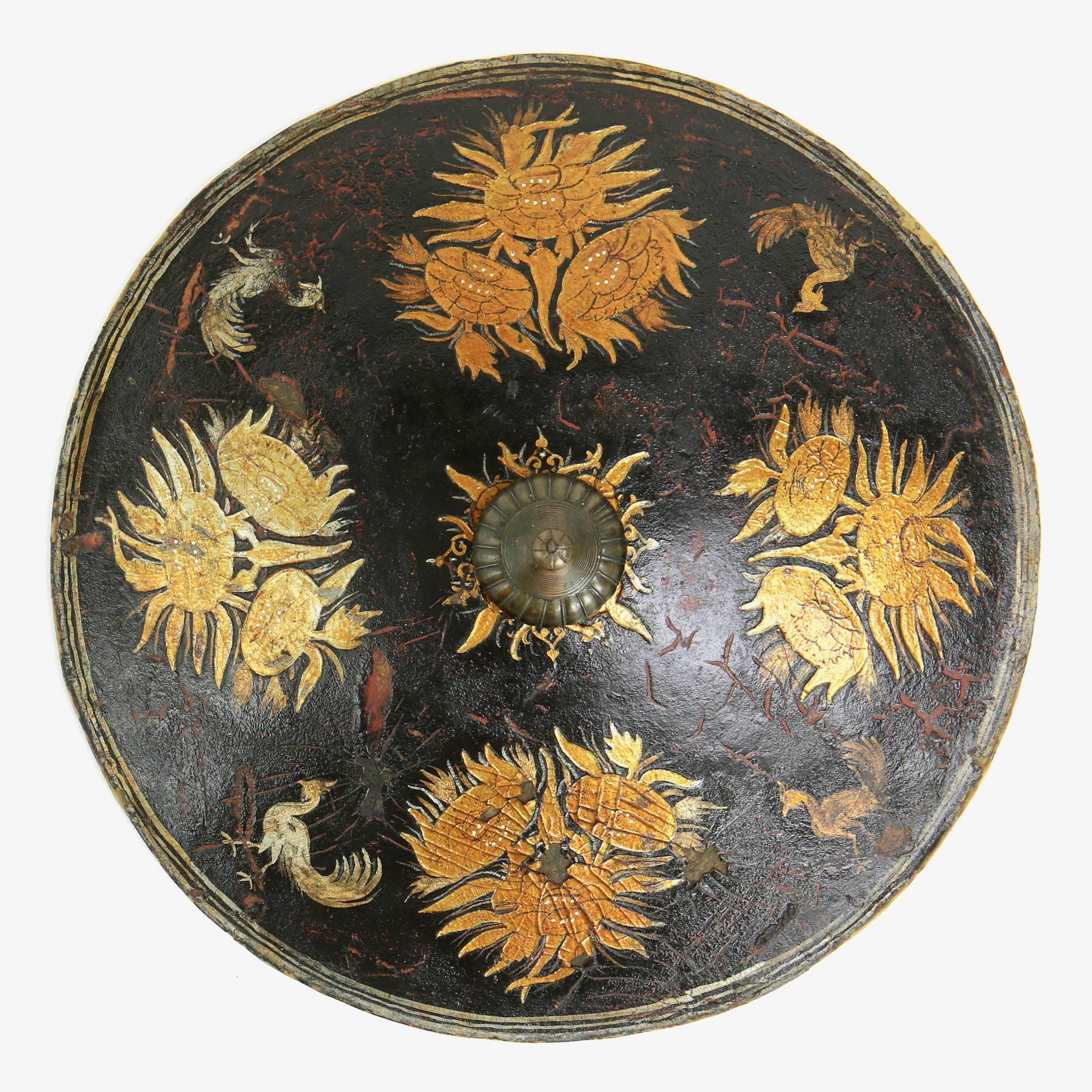
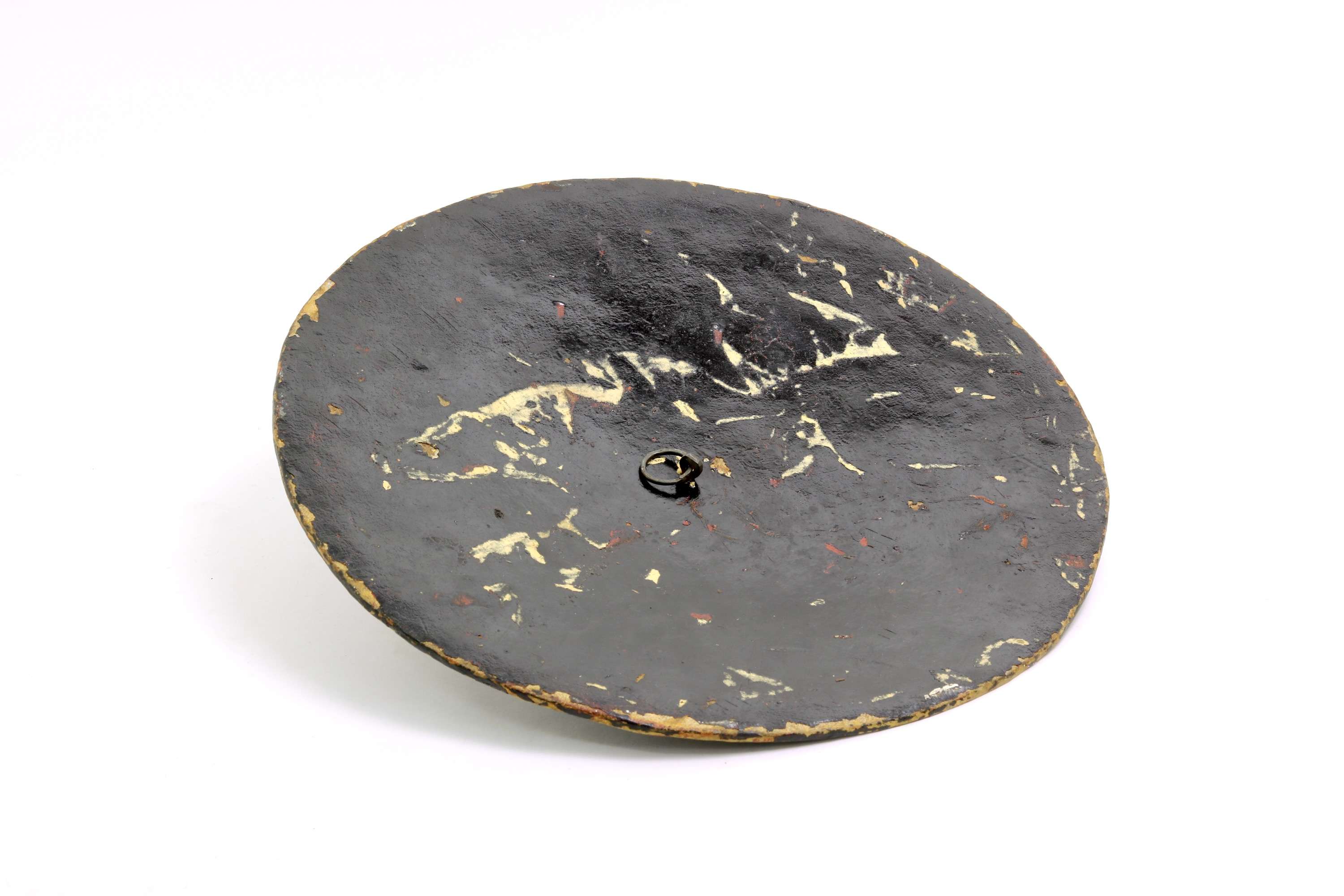
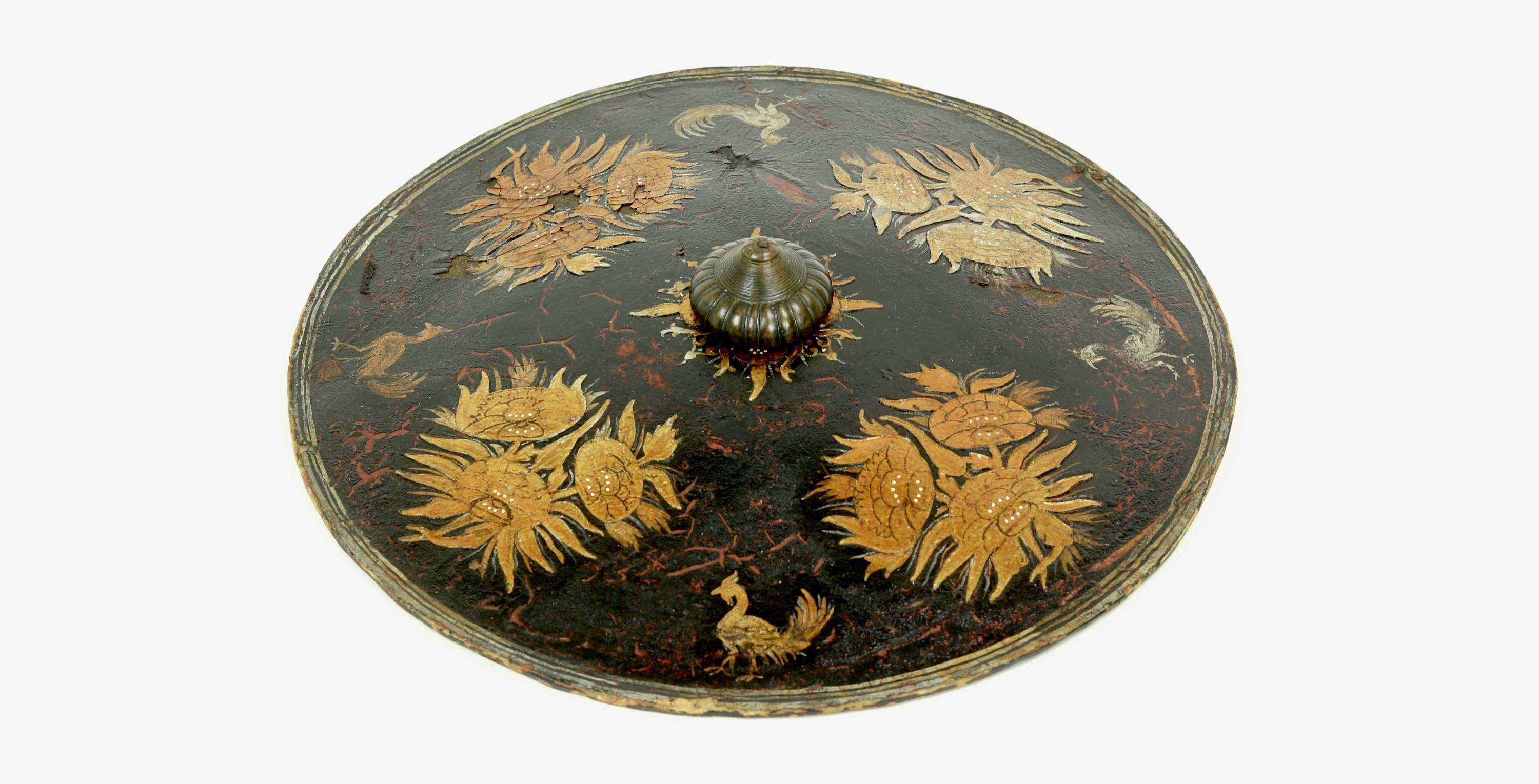


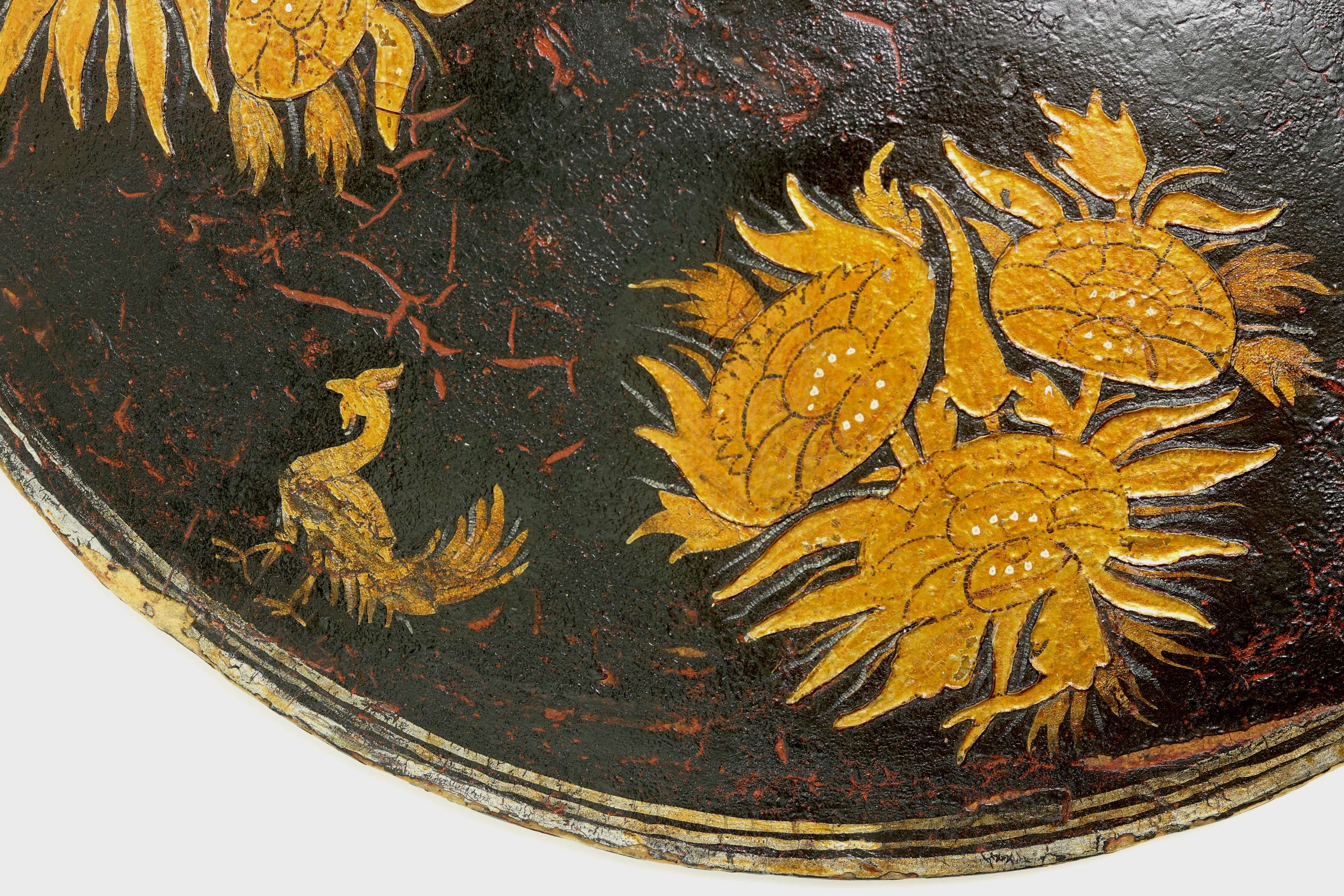

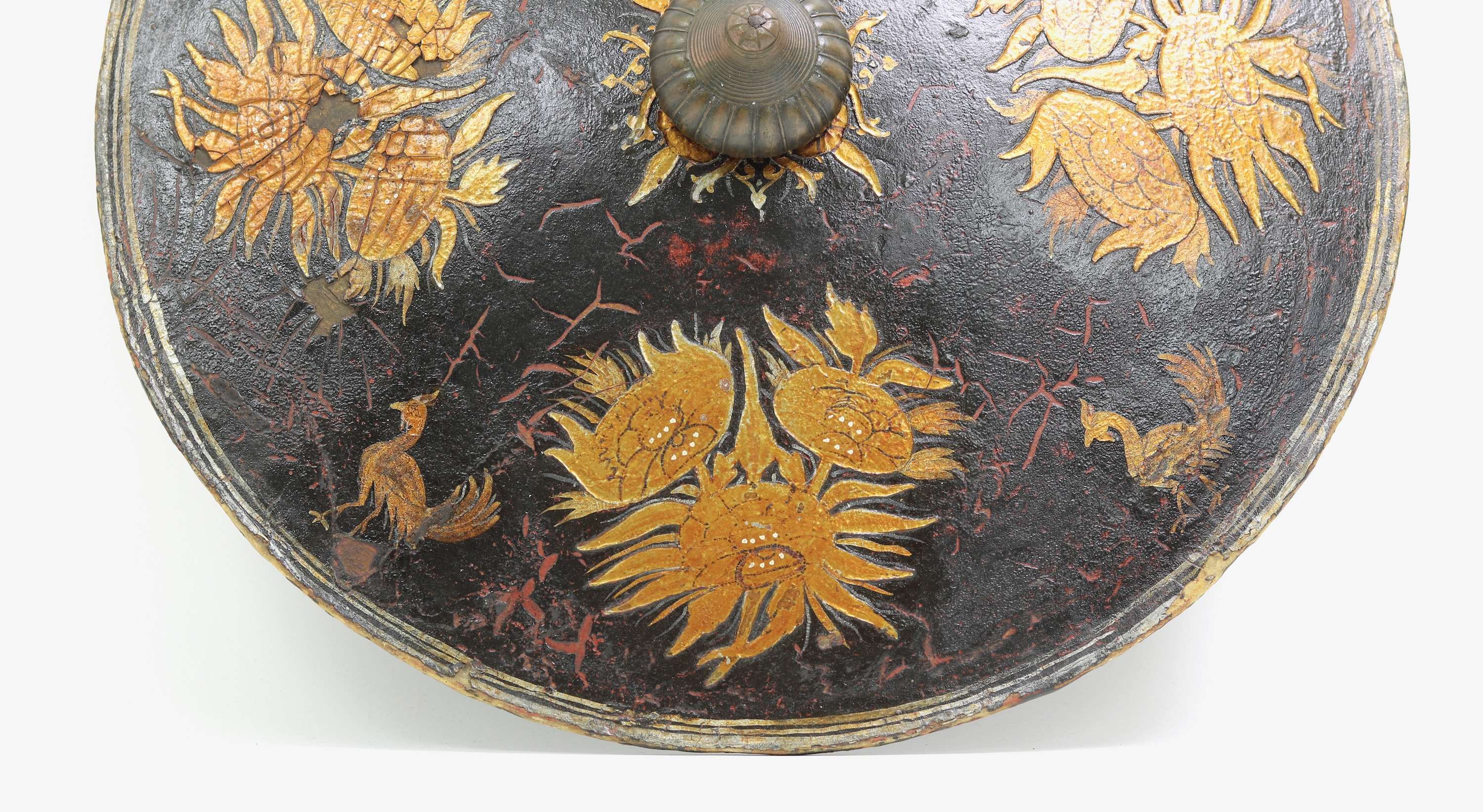

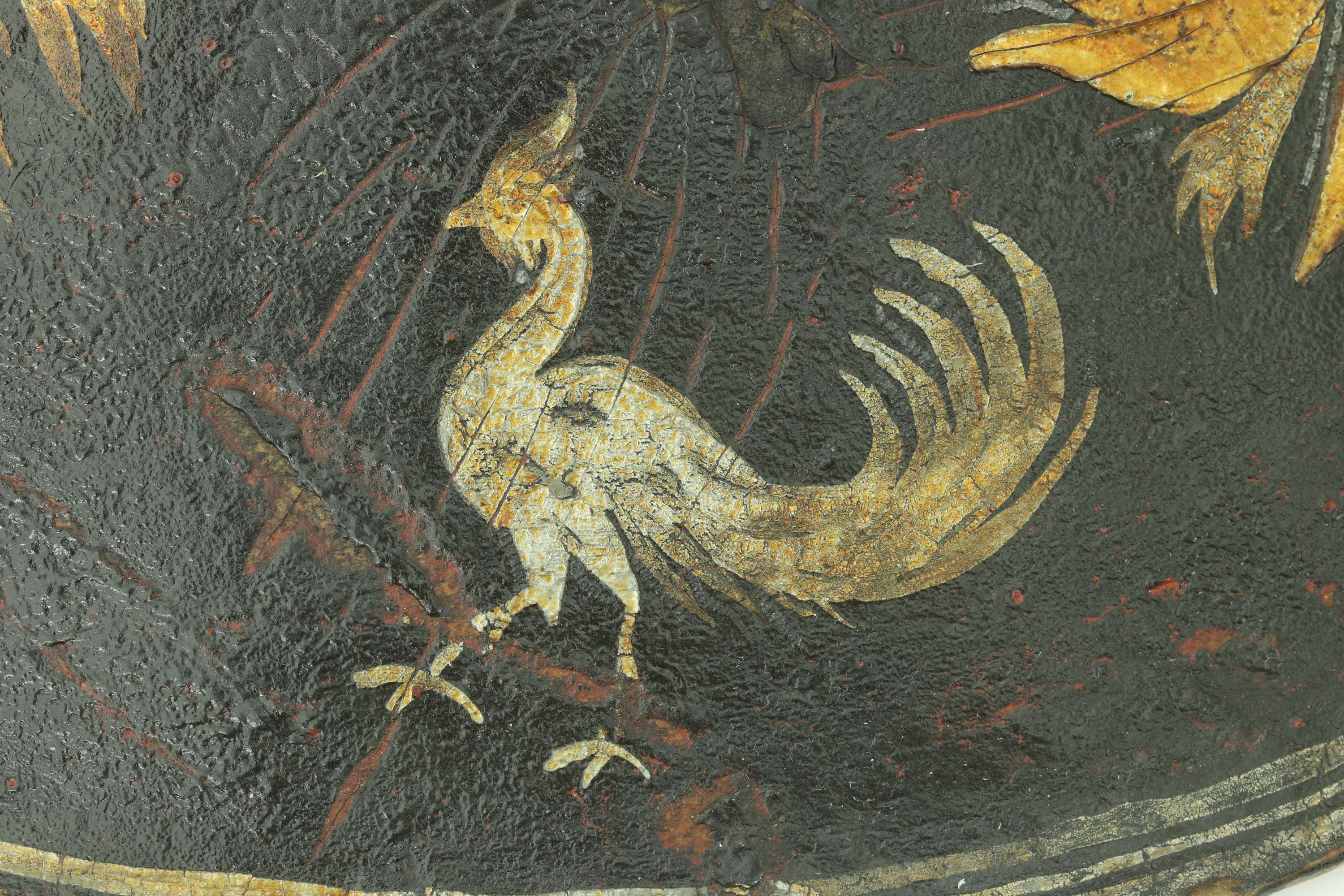
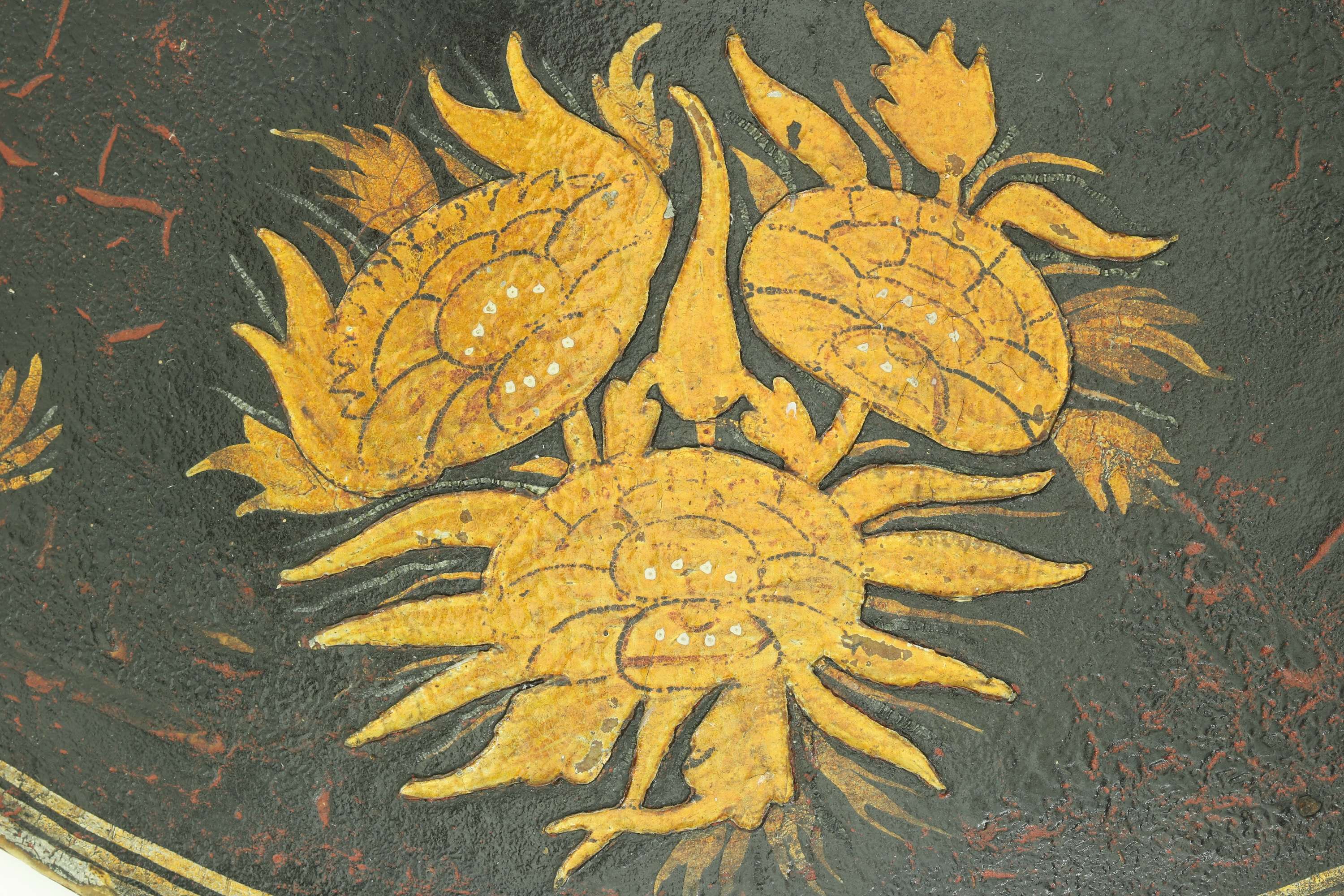
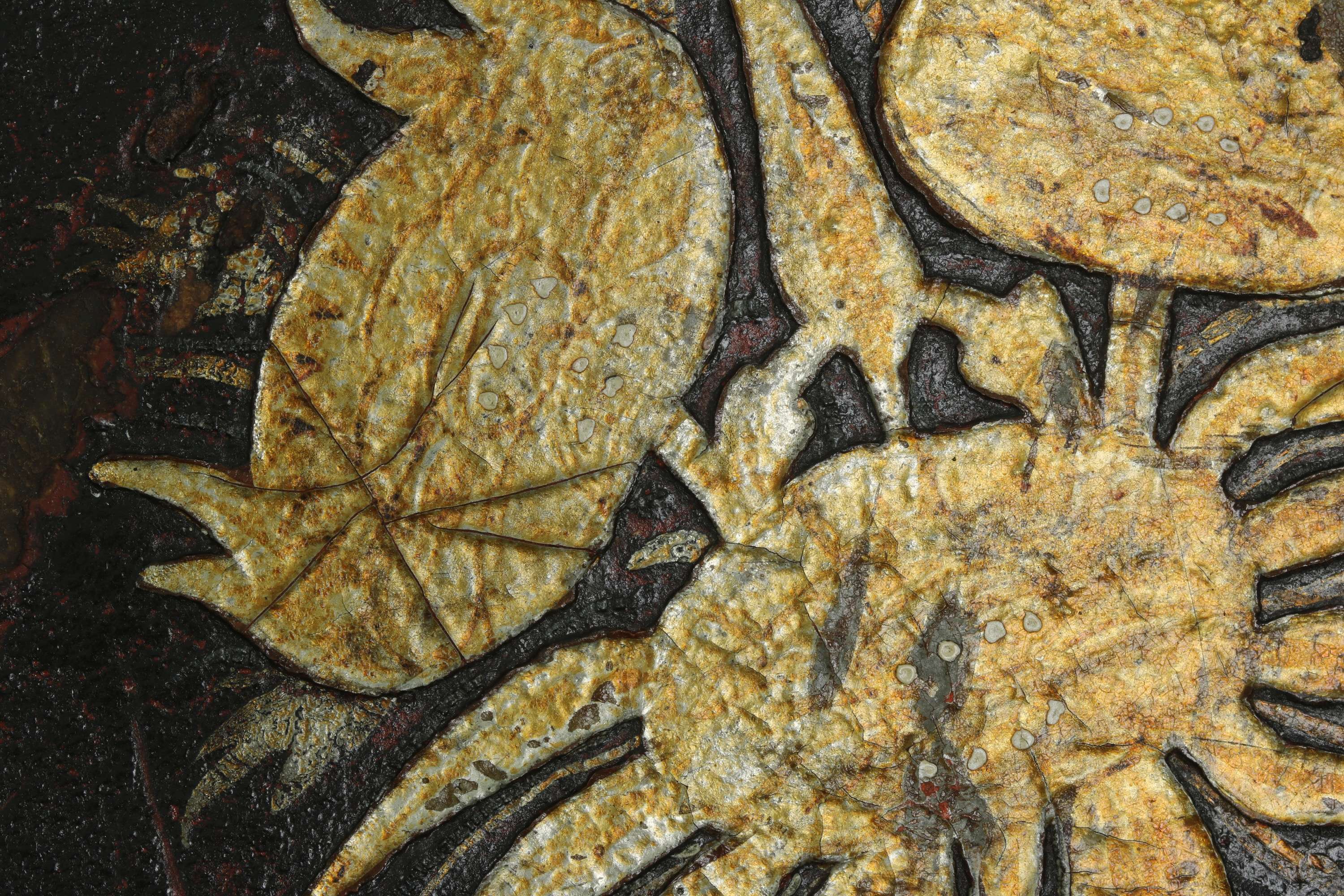

This peculiar sword was used by the Garo people of Assam for fighting, clearing the jungle, and animal…
An interesting South Indian style katar with an imported European blade.
The basket hilt is elaborately overlaid with silver in floral designs.

